Understanding Overtourism and the Great Migration: What, Where, Why and How to Solve it
Cover photo copyright Nick Kleer.
Aggressive tourism and overcrowding around East Africa's Great Migration has once again shone the spotlight on a much larger problem in safari tourism: is Africa becoming a victim of its own success? And is it destroying the pristine wilderness that it is selling, in the process? Is it even possible to experience the Great Migration without being a part of this mass tourism mess?
To answer these questions, we look at what the problem is, why it exists in the first place, and finally; how we can solve it.
Key Takeaways
- The Masai Mara and Serengeti are facing overtourism, especially during the crossing season. The causes are a soaring wildlife population in specific regions and a surge in lodges and uncontrolled vehicle traffic.
- Wildlife is being negatively impacted, with herds altering migratory behavior and predator sightings becoming overcrowded spectacles.
- Park fee increases are welcomed to support conservation goals and reduce mass-market tourism pressure.
- Travellers have options to experience the Great Migration more ethically and privately—especially by booking with experienced travel planners and choosing shoulder season travel.
- True safari luxury isn’t found in extravagance—it’s found in serenity, ethical travel, and connecting with nature away from the crowds.
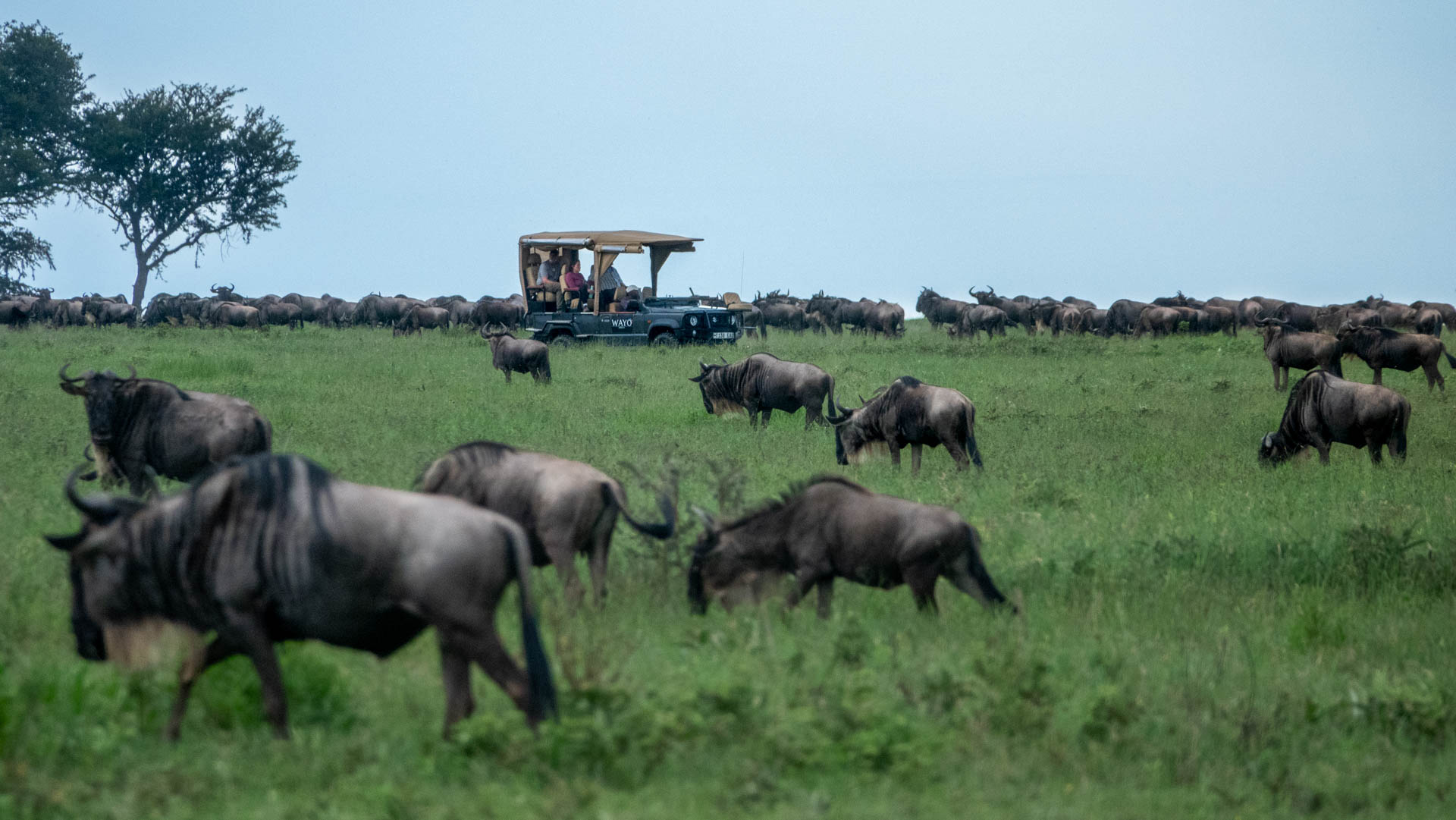
What is the problem with safari tourism and the Great Migration?
The natural creation of the Great Migration phenomenon is fascinating in itself. After a successful rinderpest elimination campaign, the Serengeti wildebeest population exploded from around 200,000 in the late 1950s to 1.4 million by the late 1970s. This rapid increase prompted the herds to push further north into the Mara region during the long dry season (June to October) in search of fresh grazing. This resulted in more dramatic river crossings than ever before.
Word of which soon spread to safari providers, who started marketing their 'Great Migration safari tour'. The Kogatende region in Tanzania and the Mara Triangle in Kenya are two of those overcrowded safari areas. Here, one can witness these dramatic seasonal river crossings en-masse, often multiple times per day.
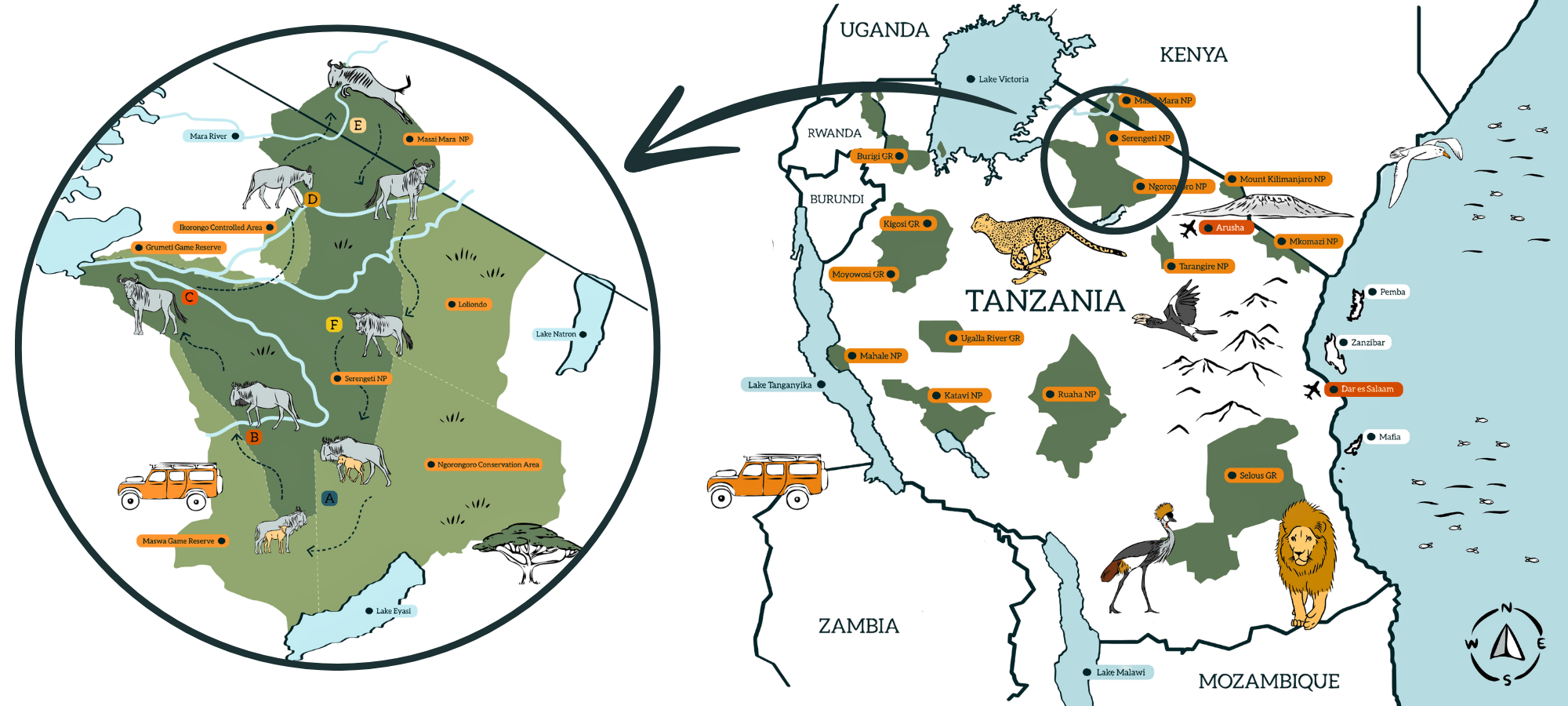
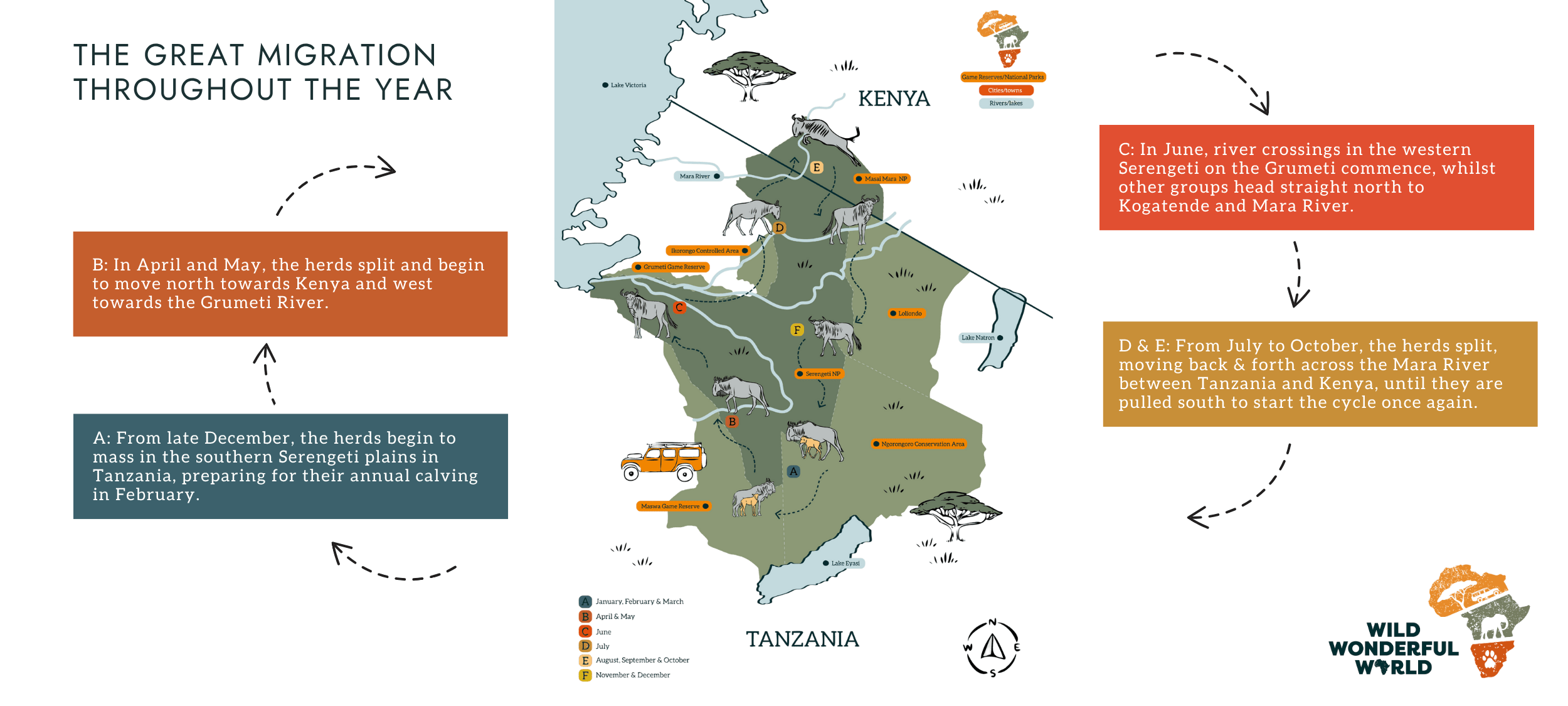
And what of the people? Wildlife is the single biggest revenue generator for Africa’s tourism. A 2015 UN study found that wildlife watching represents 80% of the total annual sales of trips to Africa. Besides the obvious 2019-2022 dip, safari sales continue to increase year-on-year. Only four African countries—Kenya, Rwanda, South Africa and Zimbabwe—are top nature tourism destinations, each attracting between 2–5 million visitors a year. These numbers are projected to double by 2030. We’ll leave you to do the math as to how many more people will be visiting these popular destinations.
This sheer historical and predicted increase of visitors means that destinations like Kenya will only become busier. The numbers don’t lie. In 1977, there were just 5 camps and lodges in Masai Mara Nature Reserve. Today, there are more than 300 camps with over 5,000 beds within and around the 1510 sq km reserve.
What do you get when you combine a sudden tourism surge with a soaring wildlife population? A big ol’ Migration Mess
And that brings us to today’s circus of completely overcrowded sightings, both of the Great Migration itself and the predators that follow in its wake. The region’s popularity has become its downfall. Those who have witnessed the river crossing spectacle know that – these days – it comes with hundreds of safari vehicles in the same area. All are racing around and practically piled on top of each other at the best photographic spots. Reports, videos and photos of safari vehicles spilling over with tourists—some even leaving the vehicle—eager to snap the perfect photo, are published almost daily.
Recently, more photos and videos by private guide Nick Kleer once again highlighted the blatant disregard for park rules, guest safety and most importantly, animal welfare. In today’s whirlpool of social media and goldfish attention spans, we commend Nick for bringing this long-standing issue back into the public eye and using his platforms to spread the word.
-_small.jpg)
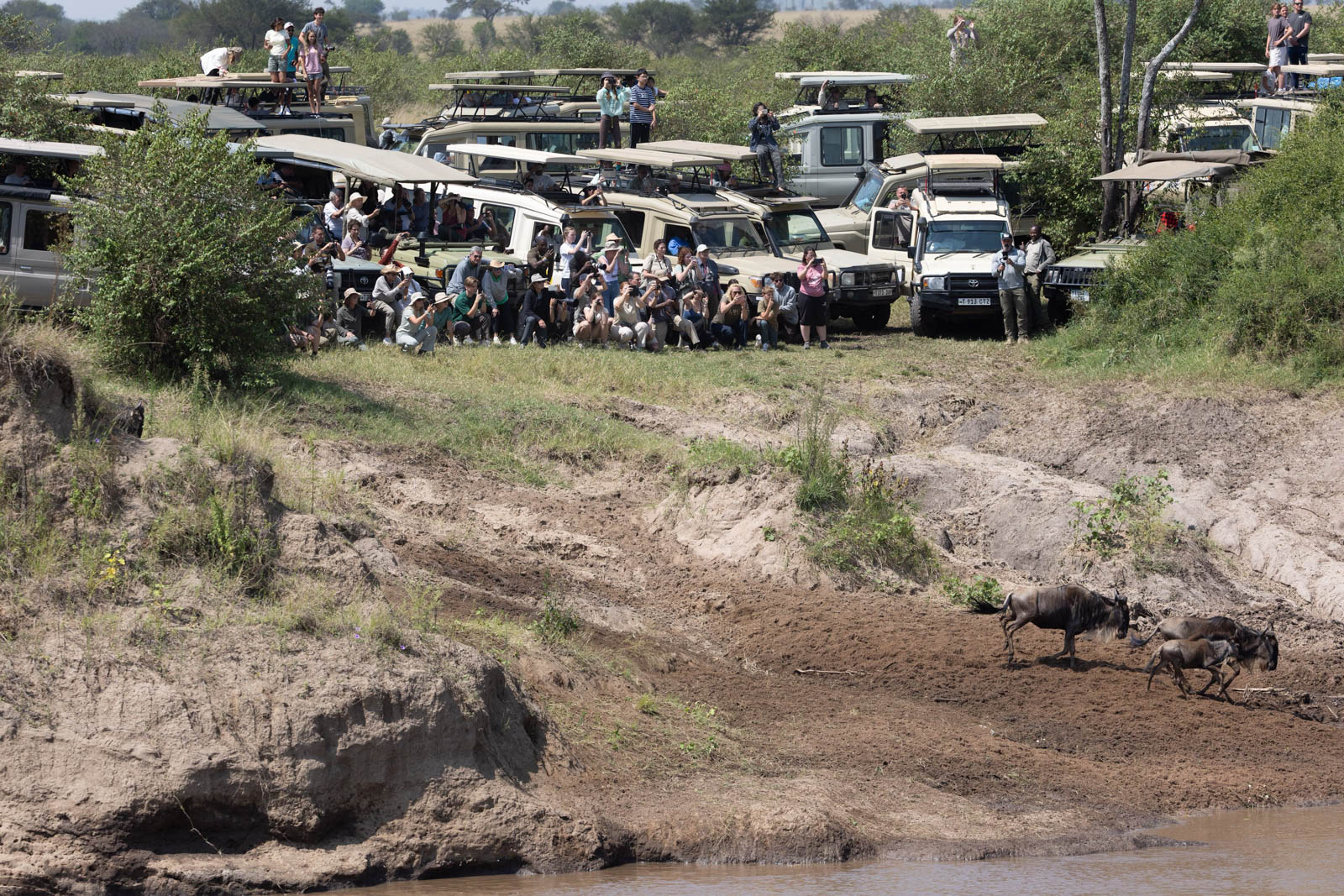
Park authorities on both sides of the border have stepped up management of sightings and enforcement of park regulations. However, the sheer size of the 25,000 sq km Mara-Serengeti ecosystem makes it impossible for them to always be everywhere. The onus first-and-foremost is on guides and tour operators to adhere to responsible game viewing protocols.
And as safari guides ourselves, we get it. It can be hard to say no to guests who promise you a hefty gratuity to get them a front row seat to the action. But it is up to us – those who take tourists and guests into these wild spaces – to instil a healthy sense of respect for wildlife and set priorities straight. Wildlife welfare first; ‘getting the (photographic) shot’, second. End of story.
You can’t have your bread buttered on both sides
Ironically, locals and safari operators are now noticing that the herds now spend far less time in the Greater Mara, moving less far north in the dry season. The reason? Jonathan and Angela Scott explain:
“A rapidly expanding human population means less room to roam; rainfall patterns have been disrupted by climate change with more frequent droughts and floods; mass tourism is also responsible for disruptions to natural events, and there is less grass for the hungry herds, with thousands of cattle entering the Reserve illegally to graze, most often at night, when visitors are back at camp. Add to these threats, the dwindling of the Mara River due to deforestation and settlement in the Mau Escarpment where the river rises, an increase in off-take for agriculture, plus plans for Dams and Hydroelectric schemes in both Kenya and Tanzania that could significantly impact its flow and the delicate balance of the Serengeti-Mara ecosystem.”
From her own personal experience, Michelle Pengilly notes:
“Unlike the South African model of fenced-in game reserves, Kenya is an open ecosystem between communities, cattle & wildlife. The pastoralist Maasai have built an economy and way of life deeply intertwined with their cattle herds in the Great Rift Valley of southern Kenya and northern Tanzania. To promote sustainable coexistence and bolster conservation success in the region, wildlife must benefit the local communities as much as cattle does. During our time volunteering with Mara Elephant Project back in 2018, we investigated this and found that park fees were far too low to benefit the local communities. This increases their focus on cattle and grazing, adding further pressure to the ecosystem.”
What is clear, is that human presence in the Mara-Serengeti ecosystem—be it in the form of the foreign safari tourist or of the local Maasai cattle herder carrying on their centuries-old way-of-life—has a significant influence on the wildlife. This influence very quickly tips towards the negative side of the scale in combination with increasing numbers.

Turning the tide and doing the right thing: wildlife is not a bargain bin
As with everything in nature, something has got to give. We as guides and responsible travel operators will continue to promote ethical wildlife viewing, recommend travelling in low season and champion barefoot luxury. Sadly, the ‘more-bigger-better' nature of large-scale commercial operators will never change.
Case in point is the heated debate around Kenya Wildlife Service's (KWS) recent proposal to nearly double park entry fees. Many safari operators have voiced concerns that this will deter all but the wealthiest travelers. We, on the other hand, firmly believe that such an increase is valid. Rather than adopting a tunnel vision solely focussed on affordability of park fees for the sake of reaching sales targets, occupation percentages and stuffing as many tourists into one vehicle as possible—measures such as increasing park fees to fund management of wildlife tourism and improve relations with local communities are evidence of a longer-term vision.
And even if the fee increase were to reduce demand in the short run, would that really be such a bad thing? The negative press that is being created by increasingly shocking sighting reports is arguably even worse for tourism demand than any planned park fee increases.
In the words of Paula Kahumbu, CEO of WildlifeDirect:
"We have to stop treating wildlife like a bargain-bin experience. Visitors to Rwanda pay $1,500 per day to see mountain gorillas, and that hasn't deterred them. Some travelers spend that much on a single night out in New York or Los Angeles. If you can spend $300 on dinner, you can spend $100 to protect an elephant."
The issue isn’t that there is safari tourism in the Masai Mara and Serengeti. The issue is the sheer volume and commercialisation of an experience that is supposed to benefit the wildlife first and foremost. The recent outcry over the Ritz- Carlton Maasai Mara Safari Camp and its controversial location is a prime example of how sensitive responsible and inclusive land management in nature reserves really is. But short of a full-blown overhaul of land and lodge leases—which comes with its own set of challenges in Africa—increasing park fees is one of the best tools to start turning the tide on the commodification and exploitation of wildlife.
Lest we forget what the real purpose of safari tourism is—to bring people to the wild, expose them to the beauty of Africa and show them why we need to protect it—the recurring publicization of the ‘Migration Mess’ reminds us of the universal truth of safari tourism: “a safari is not a circus or a zoo, or a safari park or a television documentary. It is real life – and death at times – out on the African plains.” Jonathan and Angela Scott
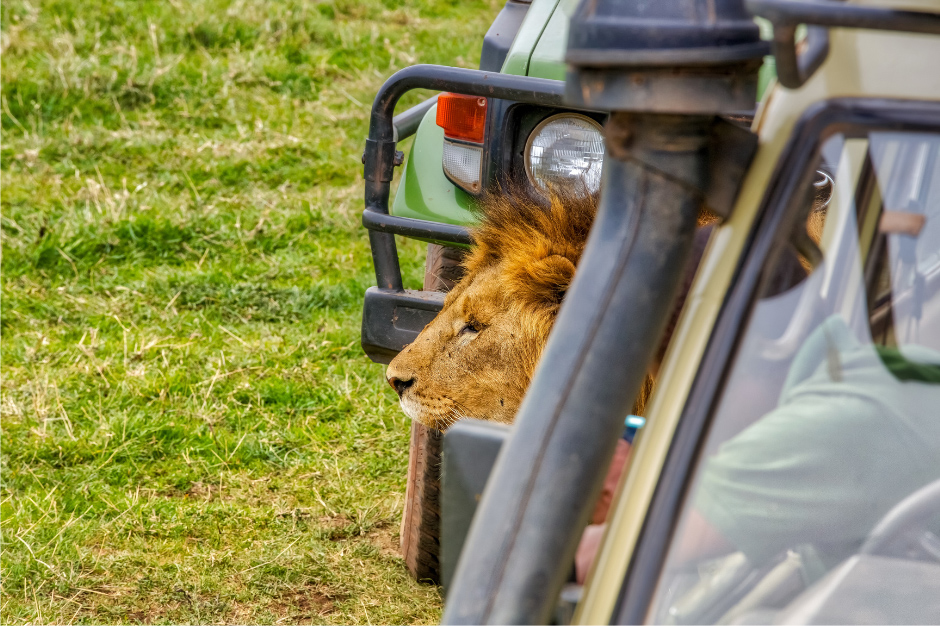
.png)
How to book a Great Migration safari the right way
Avoid overcrowded safari areas in Kenya and Tanzania
Take off your blinders, stop following the masses and create your own story! There is absolutely no reason to blanketly avoid the entirety of East African safari destinations. You don't have to avoid booking that Masai Mara safari package or going on a Serengeti safari vacation.
If you are looking for the best place to stay in Masai Mara and Serengeti to avoid the crowds, here are our top three tips:
- Consult an informed safari travel expert to ensure that you get the best experience on your Great Migration safari.
- Choose eco-conscious safari camps that treat the environment and wildlife with respect
- The best time to book a Great Migration safari is in the low season—with the added bonus of lower lodge AND park rates! Talk about two birds with one stone...
Book a luxury Masai Mara safari package or a high-end Serengeti safari vacation
If we can leave you with one positive thought, it is this: a safari doesn’t have to be a mad race to get to the best sightings at prime position. Safari in Africa is much more than what we see in the Lion King. True luxury on safari isn’t found in fancy finishes, golden platters, or rose petals and towel swans on the goose-dawn-filled duvet covering the emperor-size, four-poster bed.
True safari luxury is found in experiencing your destination to the absolute fullest. And that, you can find everywhere—if you only know where to look.
- Even in the popular Masai Mara region, a tranquil and serene Great Migration safari is very much in the cards. Get away from the crowds and experience the very best the Mara has to offer at top-rated eco-lodges in Masai Mara, Kenya
- For those looking for an exclusive, high-end wildlife photography safari, Tanzania’s Grumeti is the place-to-be.
- And it doesn’t have to be more expensive either! Have a look at our favourite African Destination Dupes to scope out the possibilities.
- Looking for a Serengeti vs Masai Mara safari comparison? Explore which destination out of Kenya, Tanzania or South Africa is better for you.
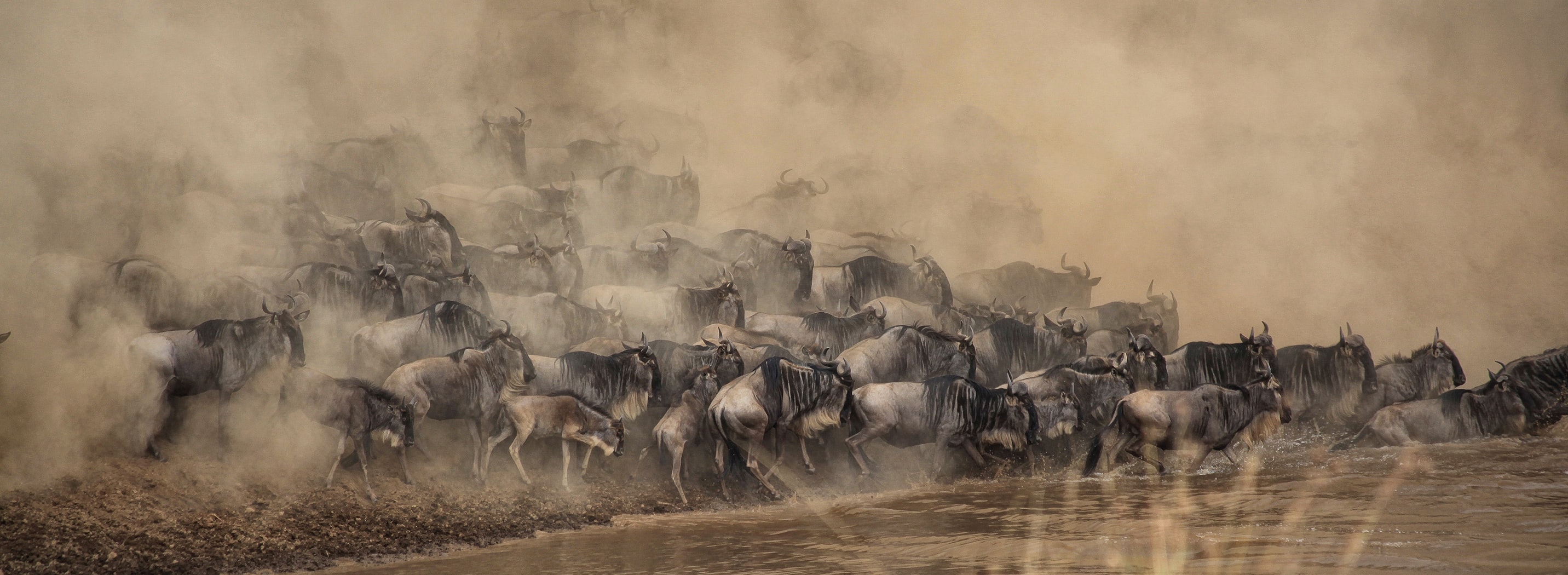
Safari Memories
A Kenyan Masai Mara safari done right
Wild Wonderful World founder and private guide Michelle remembers one of her most peaceful safari memories on her latest trip in October 2023—right in the middle of the Masai Mara:
“Rising in the dark, we set off across the plains of the Masai Mara toward the launch site of the hot air balloons. As we approached, we could see great shots of fiery gas being blown into four massive balloons to inflate them. A funny sight so early in the morning of men dwarfed to the size of ants holding onto ropes being pulled off their feet as great swathes of balloon material rolled here and there whilst the balloon slowly filled with hot air. A safety brief ensued, complete with a demonstration on how to get in and out the of basket—it’s not as elegant as one would imagine! Finally it was launch time, and just as dawn broke, we all crawled into the basket, sitting knees to chest horizontal to the ground. A mighty roar of the gas and the balloon rose, lifting our basket upright and off the ground. Safely away, we were invited to stand and off we went, climbing higher to catch the gentle breeze as we floated peacefully above the plains of the Mara. Our pilot pointed out the wildlife as we passed overhead; a hyena lying at its den, giraffes nibbling on a tree and even a warthog that came scurrying out of its hole, thinking we were a very big bird of prey indeed! It was a magical experience viewing the mighty plains from above, giving perspective into the vastness of the landscape.”
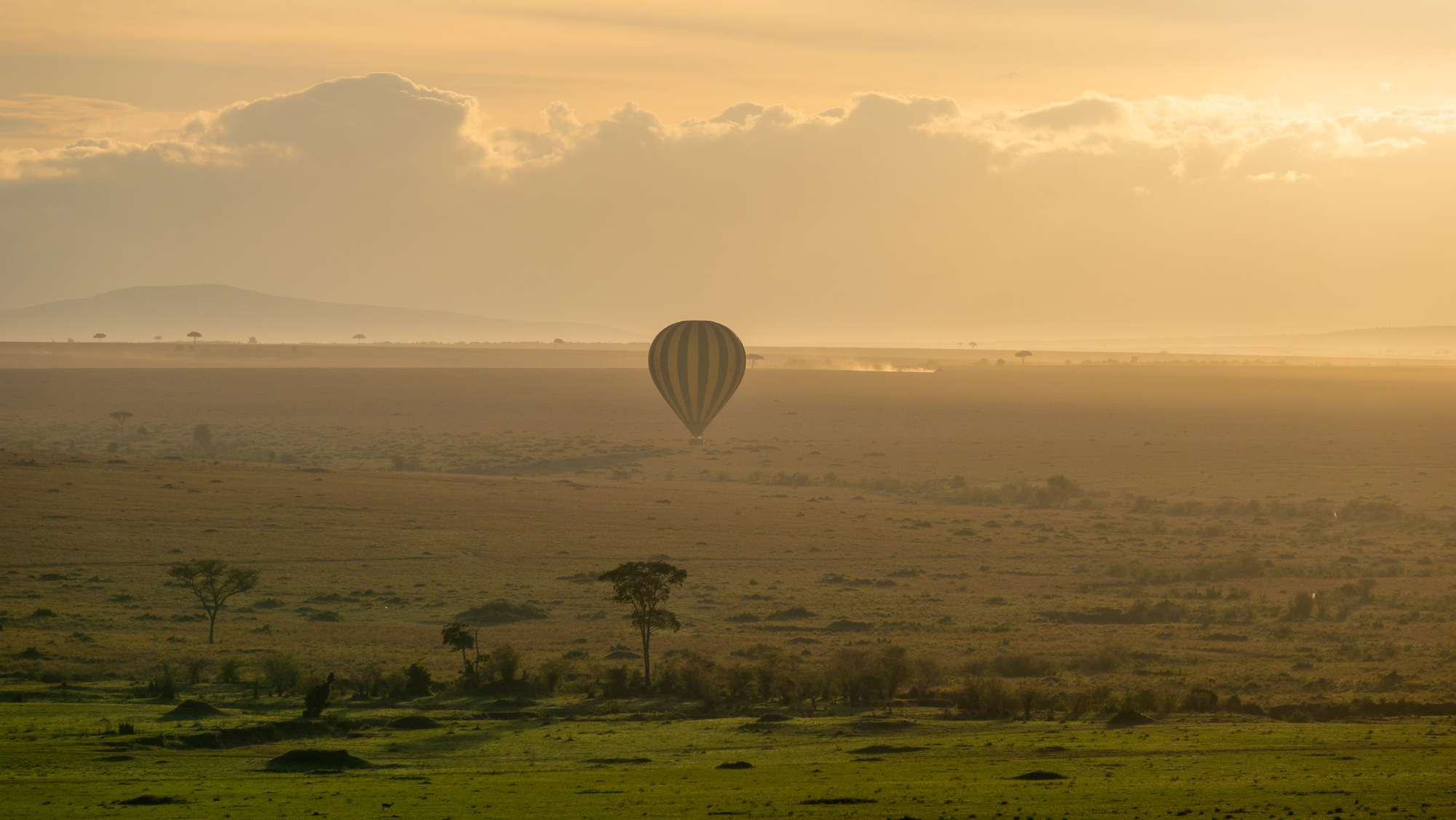
Shoulder season in the Grumeti
Curious about how it feels to witness the Serengeti in all its glory? Wild Wonderful World private guide Jonty recounts one of his favourite memories from the Grumeti:
October-December is considered shoulder-season (a quieter, more advantageously priced period to go on safari) in the Serengeti, but we had received some good information from a local guide that this would be a great time to visit. The info could not have been more spot on, the lodge was not super busy but the plains were absolutely full to the brim with thousands and thousands of wildebeest and zebra. We also had great sightings of large herds of eland and red hartebeest. On one particular morning, we departed on our early morning drive from Sabora Tented Camp, when literally 5 minutes from camp we found where a clan of hyena had caught and eaten a wildebeest during the night. Our travellers revealed that the sounds of it had kept some of them up during the night... what a great start of what was to be a absolutely fantastic morning!
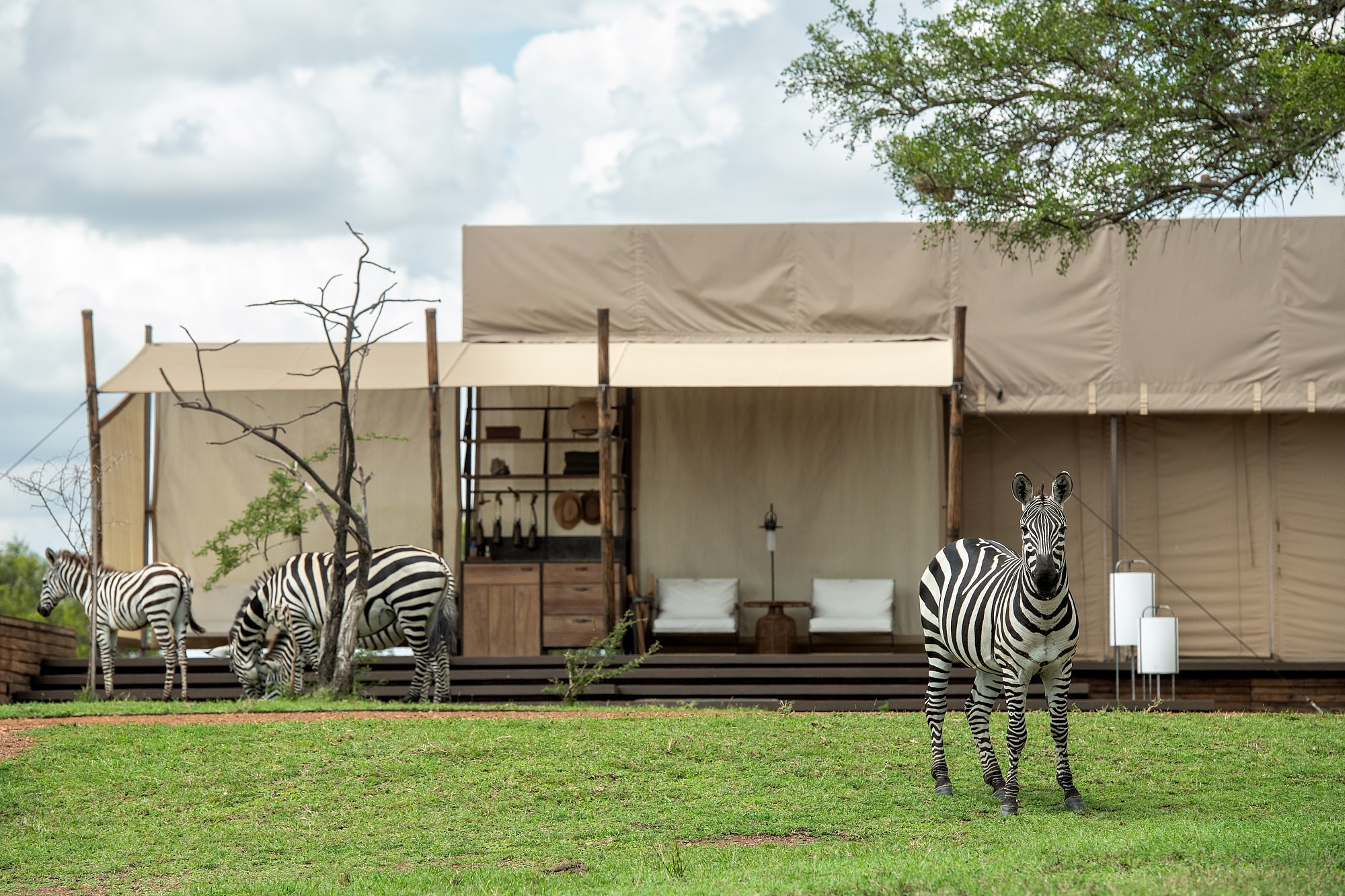
Frequently Asked Questions (FAQs)
Q: What is the best time to visit the Masai Mara to avoid crowds?
A: The shoulder seasons—November to early December and late January to March—offer a more exclusive experience with fewer vehicles, better lodge availability and lower rates. You might not see the mass crossings but you will experience a classic East African safari —the way it was meant to be.
Q: Can I still see the Great Migration without the crowds?
A: Yes, by working with a luxury safari expert, you can book private camps in the Mara or Serengeti, far from the busiest river crossing areas. Or, chat to your travel agent about traveling to see the Migration at a different time of year and in a different region such as the Grumeti. Here, you can witness incredible crossings while being the only vehicle for miles!
Q: Is the Masai Mara too touristy now?
A: Some areas, particularly during peak migration season, are overcrowded. However, expertly guided safaris can help you explore quieter conservancies and lesser-known corners of the ecosystem.
Q: How do higher park fees benefit conservation?
A: Increased park fees help fund ranger salaries, community benefit programs, and wildlife protection, while also limiting over-tourism by filtering for high-impact, conscious travellers.
Q: Are there alternative destinations to the Masai Mara?
A: Yes. The Serengeti in Tanzania and private reserves in Kenya or South Africa offer spectacular wildlife without the same level of congestion.
Q: What’s the difference between a luxury and a mass-market safari?
A: Luxury safaris prioritize exclusivity, low-impact travel, and personalized guiding. Mass-market safaris often prioritize volume over experience, which can compromise animal welfare and guest satisfaction.
Q: How can I ensure my safari supports local communities?
A: Book with companies that give back to conservation or support local community projects, and ask about where your fees go—transparent operators will gladly explain.
Written by Evelyn Poole











.png)